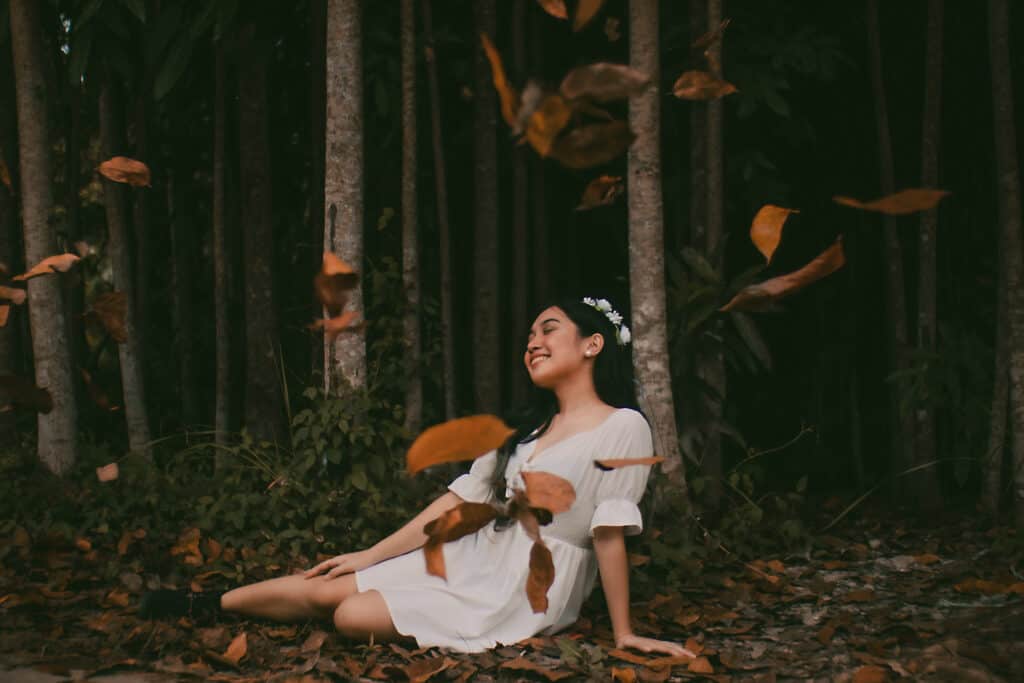Autumn is upon us, and this means that plenty of leaves will be swiftly changing their colors. But as their colors change to rich reds, oranges, and golds- the leaves will begin leaving their tree home and falling to the ground. This makes for a beautiful collection of images, and one that photographers are quick to take advantage of! Here is our little guide on capturing these subtle wonders of the season.
First Thing’s First: Shutter Speed
All cameras and lenses can do well for photographing leaves falling, whether the leaves are the subject or just the accessory to a photo shoot. It’s the camera settings that make the difference!
As leaves are falling, you’re dealing with a moving subject. Depending on how you want to represent your moving subject, you’ll be most focused on the shutter speed. In layman terms, shutter speed is how fast your camera can take a picture.
Fast shutters capture photographs more quickly than slow shutters. Keeping your shutter moving quickly is what freezes action! When the shutter is slow, motion begins to blur because the doors don’t close quickly. When the motion blurs and the shutter is slow, this is called a long exposure.
The shutter speed is a part of the exposure equation which creates the images you seek to capture!
Exposure is a formula: ISO + shutter speed + aperture = exposure.
Like a mathematical formula, if one variable is changed, the rest are affected by the change.
The easiest way to fill in the exposure formula is to have one variable be a base line that never changes. As we are working with movement here, it’s best to keep your shutter speed as the baseline!
If you’re wanting to freeze the act of leaves falling, you’ll need a faster shutter speed. To be on the safe side of motion being frozen no matter what, going higher than 1/4000 is recommended, with 1/8000 being the maximum. But that being said, lighting may not always be ideal and you’ll often need to go to a somewhat lower shutter speed in order to maintain proper exposure. The shutter speed you need to freeze action depends on how fast your subject is moving.
For falling leaves, a shutter of 1/500 at minimum is excellent.
Now, if you want to convey more of a sense of movement and create some motion blur with leaves falling, you’ll want to slow your shutter down quite a bit. Around 1/60 and slower is excellent!
Keep in mind that adjusting the shutter speed also adjusts how much light hits your camera sensor. The higher the shutter speed number, the darker the image. The lower the shutter speed number, the lighter the image. Adjust the other variables to accommodate this fact.
Does Aperture Matter?
The aperture controls how much light does (or doesn’t) hit your sensor. The aperture also factors into depth of field (or how much of an image is in focus).
The lower the aperture number, the more light the camera lets in. The higher the aperture number, the less light the camera lets in. The lower the aperture number, the shallower the depth of field. The larger the aperture number, the deeper the depth of field.
Aperture matters in the final aesthetic of an image. If you’re photographing just falling leaves, you may want a shallow depth of field to isolate the leaves from the background. If the leaves are an accessory to, say, a portrait shoot, a deeper depth of field allows both your subject to be in focus and the leaves that play a role in the photo story.
Play with Vantage Point
Your shooting vantage point is the perspective at which you see. With photography, vantage point refers to the perspective you take a photograph at (so, it’s what your lens sees!).
When capturing falling leaves, there are many brilliant images you can achieve with a variety of vantage points. For some ideas, here are the three most common vantage points:
The fist is eye level vantage point. As the name implies, eye level vantage point is taken at a normal stance. What you see naturally is what you shoot. This vantage point is great when using leaves as an accessory to a photo shoot, such as capturing a girl playing with leaves.
The next is shooting low from the ground, in a low vantage point. Also known as a “worm’s eye view”, the low vantage point is one of the more unique vantage points. Lay on the ground and point your camera up, capture the leaves falling all around! This perspective can be nostalgic for many who laid in fallen leaves as children.
The third is the high vantage point. High vantage points are taken above the subject at a higher angle. You can point the camera down towards the subject at an angle by being above them, or by photographing a very high up subject. This can be a unique perspective (especially if you have a drone) that the average person may have never seen before.
Get Help From a Friend
Finally, leaves don’t fall on command. Sometimes, you need to pick some already downed leaves off the ground and throw them up! Getting a friend to help you with this is a great way to be able to capture images at your preferred time of day!
In conclusion, don’t let this fleeting season pass you by- capture some lovely falling leaf shots.
